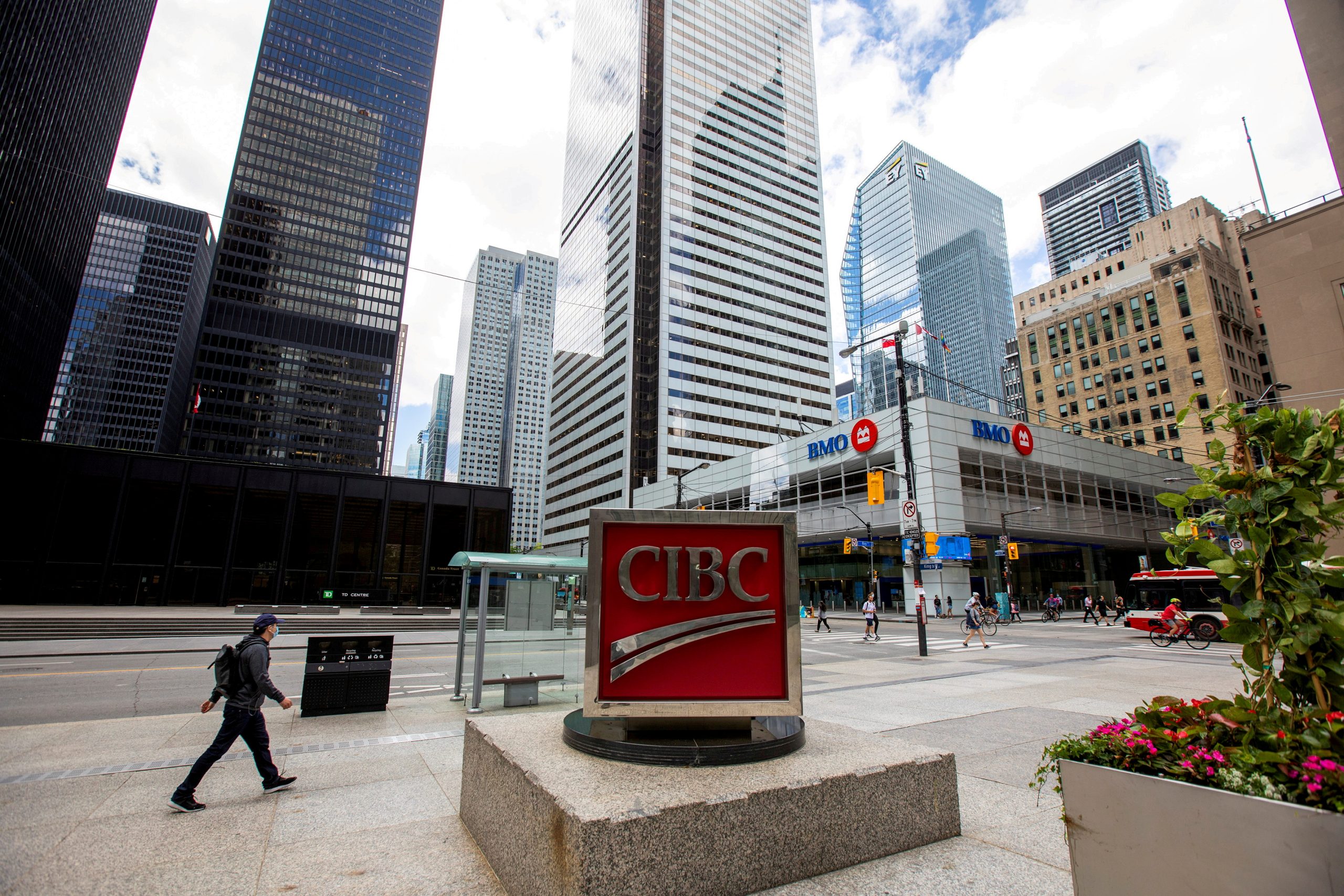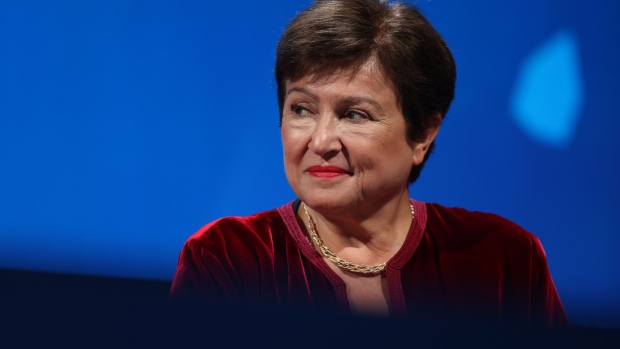Economy
Canadian banks’ lending recovery seen clouded by hot inflation

|
|
Surging inflation and rising bond yields are set to offer a shot in the arm for Canadian banks’ profit margins, which have languished during the pandemic, but an aggressive response by central banks could derail a nascent lending recovery and increase defaults, investors and analysts said.
Canadian banks’ loan growth outside of mortgages all but disappeared during the pandemic as lockdowns and surging deposits slowed consumer and business borrowing. Although spending has increased after lockdowns were lifted, that has so far failed to translate into robust credit growth.
Higher interest rates drive banks’ net interest margins. But uncertainty around how persistent inflation will be and how quickly rates will rise is clouding the outlook for lending recovery into next year that investors had hoped for.
“If (the Bank of Canada and U.S. Federal Reserve) raise rates too quickly, that would stifle economic growth, and loan demand will decline. … That would be a negative for the banks and have a negative impact on profitability,” said Rob Colangelo, vice president and senior credit officer at Moody’s Investors Service.
An aggressive response would raise loan servicing costs, raising the potential for defaults. Banks would increase bad loan provisions, which would lead to weaker profit growth.
And given the recent surge in demand for variable-rate mortgages, a rapid rise in rates would make borrowers more vulnerable, potentially leading to loan losses, said Mike Driscoll, head of North American financial institutions at DBRS Morningstar.
The latest data showed inflation surged to a near two-decade high of 4.7% in October. While money markets expect a hike as soon as March and five in all next year, the Bank of Canada reiterated this week that increases are not expected until the middle quarters of 2022.
“Grocery prices, cars, everything that people buy is getting more expensive,” Driscoll added. “While wages may be increasing, real wages are declining. Given the high debt loads … that can be problematic. There could be higher credit losses.”
As the pandemic recedes, investors are hoping banks’ profit growth would once again come from core lending operations, rather than from releasing bad debt reserves that have driven better-than-expected earnings in the past year, and other businesses like wealth management and capital markets.
To be sure, most analysts and investors don’t expect the central bank to raise rates so quickly and abruptly that it derails the economic recovery. But if the Bank of Canada delays hikes, and inflation persists and seeps into wages, it may not have a choice, some investors said.
“We assume that if inflation continues to be elevated well above the target range, (the central bank) could be forced to act,” Colangelo said.
An overnight rate “pushing 3%” is the point that could choke off economic growth and possibly prompt a recession, said Brian Madden, portfolio manager at Goodreid Investment Counsel.
“A recession is unambiguously bad for the banks. … You get credit losses, and it chokes off loan demand,” he said. “I think it’s unlikely, but the risk isn’t zero.”
(Reporting By Nichola Saminather; additional reporting by Julie Gordon; editing by Jonathan Oatis)
Economy
Nigeria's Economy, Once Africa's Biggest, Slips to Fourth Place – Bloomberg


Nigeria’s economy, which ranked as Africa’s largest in 2022, is set to slip to fourth place this year and Egypt, which held the top position in 2023, is projected to fall to second behind South Africa after a series of currency devaluations, International Monetary Fund forecasts show.
The IMF’s World Economic Outlook estimates Nigeria’s gross domestic product at $253 billion based on current prices this year, lagging energy-rich Algeria at $267 billion, Egypt at $348 billion and South Africa at $373 billion.
Economy
IMF Sees OPEC+ Oil Output Lift From July in Saudi Economic Boost – BNN Bloomberg


(Bloomberg) — The International Monetary Fund expects OPEC and its partners to start increasing oil output gradually from July, a transition that’s set to catapult Saudi Arabia back into the ranks of the world’s fastest-growing economies next year.
“We are assuming the full reversal of cuts is happening at the beginning of 2025,” Amine Mati, the lender’s mission chief to the kingdom, said in an interview in Washington, where the IMF and the World Bank are holding their spring meetings.
The view explains why the IMF is turning more upbeat on Saudi Arabia, whose economy contracted last year as it led the OPEC+ alliance alongside Russia in production cuts that squeezed supplies and pushed up crude prices. In 2022, record crude output propelled Saudi Arabia to the fastest expansion in the Group of 20.
Under the latest outlook unveiled this week, the IMF improved next year’s growth estimate for the world’s biggest crude exporter from 5.5% to 6% — second only to India among major economies in an upswing that would be among the kingdom’s fastest spurts over the past decade.
The fund projects Saudi oil output will reach 10 million barrels per day in early 2025, from what’s now a near three-year low of 9 million barrels. Saudi Arabia says its production capacity is around 12 million barrels a day and it’s rarely pumped as low as today’s levels in the past decade.
Mati said the IMF slightly lowered its forecast for Saudi economic growth this year to 2.6% from 2.7% based on actual figures for 2023 and the extension of production curbs to June. Bloomberg Economics predicts an expansion of 1.1% in 2024 and assumes the output cuts will stay until the end of this year.
Worsening hostilities in the Middle East provide the backdrop to a possible policy shift after oil prices topped $90 a barrel for the first time in months. The Organization of Petroleum Exporting Countries and its allies will gather on June 1 and some analysts expect the group may start to unwind the curbs.
After sacrificing sales volumes to support the oil market, Saudi Arabia may instead opt to pump more as it faces years of fiscal deficits and with crude prices still below what it needs to balance the budget.
Saudi Arabia is spending hundreds of billions of dollars to diversify an economy that still relies on oil and its close derivatives — petrochemicals and plastics — for more than 90% of its exports.
Restrictive US monetary policy won’t necessarily be a drag on Saudi Arabia, which usually moves in lockstep with the Federal Reserve to protect its currency peg to the dollar.
Mati sees a “negligible” impact from potentially slower interest-rate cuts by the Fed, given the structure of the Saudi banks’ balance sheets and the plentiful liquidity in the kingdom thanks to elevated oil prices.
The IMF also expects the “non-oil sector growth momentum to remain strong” for at least the next couple of years, Mati said, driven by the kingdom’s plans to develop industries from manufacturing to logistics.
The kingdom “has undertaken many transformative reforms and is doing a lot of the right actions in terms of the regulatory environment,” Mati said. “But I think it takes time for some of those reforms to materialize.”
©2024 Bloomberg L.P.
Economy
IMF Boss Says ‘All Eyes’ on US Amid Risks to Global Economy – BNN Bloomberg


(Bloomberg) — The head of the International Monetary Fund warned the US that the global economy is closely watching interest rates and industrial policies given the potential spillovers from the world’s biggest economy and reserve currency.
“All eyes are on the US,” Kristalina Georgieva said in an interview on Bloomberg’s Surveillance on Thursday.
The two biggest issues, she said, are “what is going to happen with inflation and interest rates” and “how is the US going to navigate this world of more intrusive government policies.”
The sustained strength of the US dollar is “concerning” for other currencies, particularly the lack of clarity on how long that may last.
“That’s what I hear from countries,” said the leader of the fund, which has about 190 members. “How long will the Fed be stuck with higher interest rates?”
Georgieva was speaking on the sidelines of the IMF and World Bank’s spring meetings in Washington, where policymakers have been debating the impacts of Washington and Beijing’s policies and their geopolitical rivalry.
Read More: A Resilient Global Economy Masks Growing Debt and Inequality
Georgieva said the IMF is optimistic that the conditions will be right for the Federal Reserve to start cutting rates this year.
“The Fed is not yet prepared, and rightly so, to cut,” she said. “How fast? I don’t think we should gear up for a rapid decline in interest rates.”
The IMF chief also repeated her concerns about China devoting too much capital and labor toward export-oriented manufacturing, causing other countries, including the US, to retaliate with protectionist policies.
China Overcapacity
“If China builds overcapacity and pushes exports that create reciprocity of action, then we are in a world of more fragmentation not less, and that ultimately is not good for China,” Georgieva said.
“What I want to see China doing is get serious about reforms, get serious about demand and consumption,” she added.
A number of countries have recently criticized China for what they see as excessive state subsidies for manufacturers, particularly in clean energy sectors, that might flood global markets with cheap goods and threaten competing firms.
US Treasury Secretary Janet Yellen hammered at the theme during a recent trip to China, repeatedly calling on Beijing to shift its economic policy toward stimulating domestic demand.
Chinese officials have acknowledged the risk of overcapacity in some areas, but have largely portrayed the criticism as overblown and hypocritical, coming from countries that are also ramping up clean energy subsidies.
(Updates with additional Georgieva comments from eighth paragraph.)
©2024 Bloomberg L.P.
-



 Investment21 hours ago
Investment21 hours agoUK Mulls New Curbs on Outbound Investment Over Security Risks – BNN Bloomberg
-



 Sports19 hours ago
Sports19 hours agoAuston Matthews denied 70th goal as depleted Leafs lose last regular-season game – Toronto Sun
-
Business18 hours ago
BC short-term rental rules take effect May 1 – CityNews Vancouver
-
Media2 hours ago
Trump Media alerts Nasdaq to potential market manipulation from 'naked' short selling of DJT stock – CNBC
-
Art18 hours ago
Collection of First Nations art stolen from Gordon Head home – Times Colonist
-



 Investment18 hours ago
Investment18 hours agoBenjamin Bergen: Why would anyone invest in Canada now? – National Post
-



 Tech20 hours ago
Tech20 hours agoSave $700 Off This 4K Projector at Amazon While You Still Can – CNET
-



 Tech19 hours ago
Tech19 hours ago'Kingdom Come: Deliverance II' Revealed In Epic New Trailer And It Looks Incredible – Forbes






